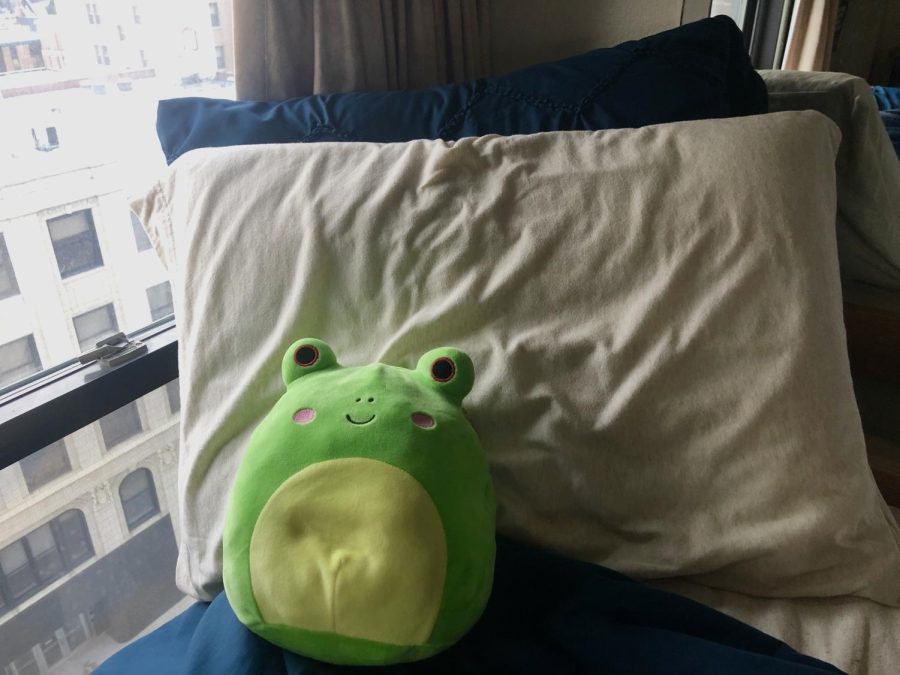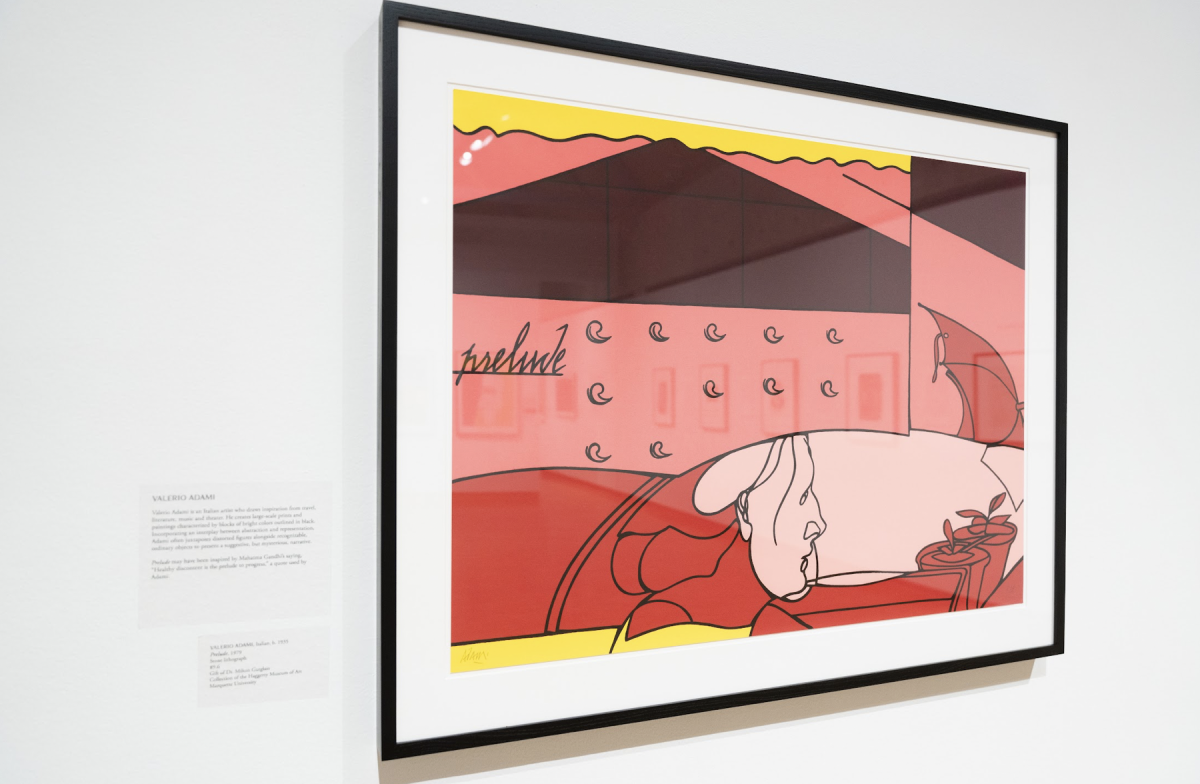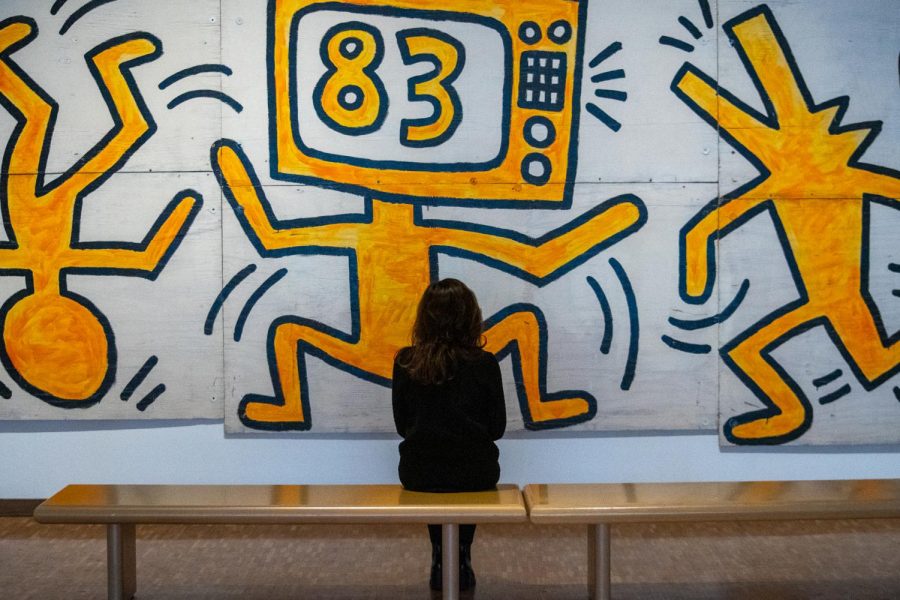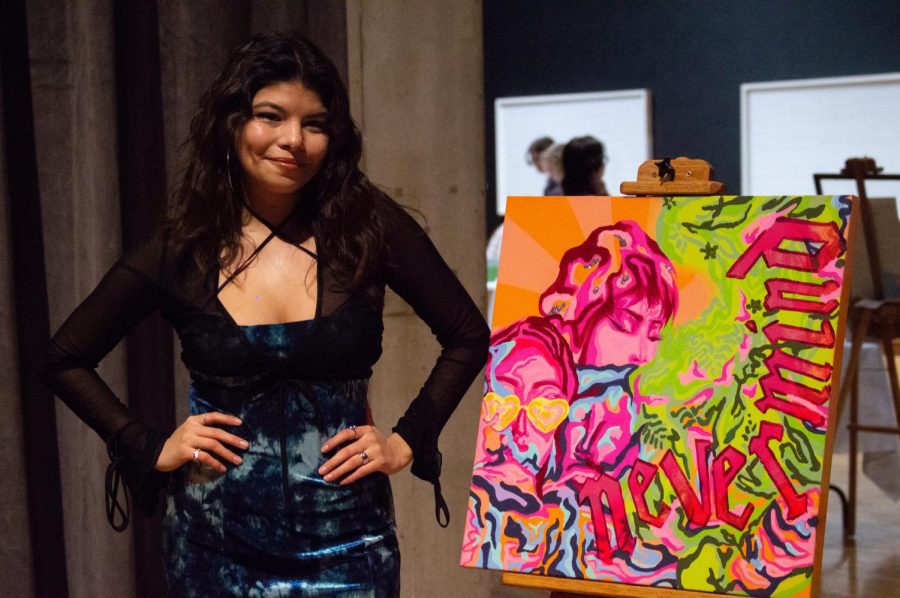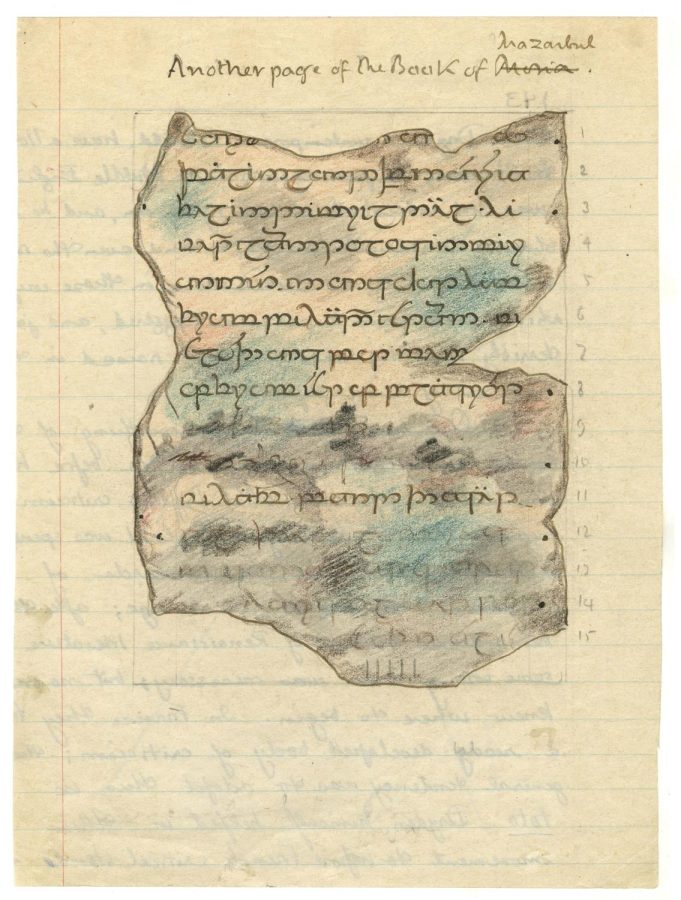Art, science and education will come together during a faculty workshop Friday in celebration of the opening of the “Alexis Rockman: The Great Lakes Cycle” exhibition at the Haggerty Museum of Art.
The workshop will be held from 8 a.m. to 2 p.m. It will begin at the Haggerty with introductions, followed by presentations from Marquette faculty detailing the ways in which they engage with the Haggerty.
Alexis Rockman, the artist behind “The Great Lakes Cycle,” and Jill Leonard, a biology professor at Northern Michigan University, will then lead faculty through a tour of the exhibition and the Haggerty’s vaults.
The exhibition, which has been showcased across the Midwest including Michigan State University, Museum of Contemporary Art Cleveland and the Grand Rapids Art Museum, includes five murals showcasing the past, present and future of the Great Lakes ecosystem. The goal of the paintings is to portray the processes of the lakes and how they have changed over time, Leonard said.
The day will conclude with a presentation of a collaborative animation project between the Haggerty and Michael Schlappi, a biology professor at Marquette, about growing cold-tolerant Asian rice at the 3D Visualization Lab in Engineering Hall.
Lynne Shumow, curator for academic engagement at the Haggerty, said the workshop, titled “Enhancing the Student Experience: Arts & Environment as a Pedagogical Tool,” began as a conversation between her and Jennifer Maney, the Catholic Jesuit higher education cooperative coordinator at Marquette. Shumow said they wanted to create a workshop that would inform others about how to use art and the Haggerty for teaching purposes.
Shumow said the workshop was originally meant to center on Earth Day, which is April 22, and was in collaboration with Brent Ribble, the campus sustainability coordinator. When Shumow mentioned Rockman’s visit for the opening of his exhibition, Ribble and Maney said they were excited by the idea of having Rockman meet with faculty, and the two events merged, Shumow said.
The exhibition itself, Rockman said, started when Dana Friis-Hansen, director and CEO of the Grand Rapids Art Museum, reached out to him about creating something for the museum. Rockman said he was interested by the Great Lakes and chose it as his subject.
Rockman began the project with months of reading books about the Great Lakes and driving along Lake Michigan for two weeks. Beginning in Grand Rapids and ending in Green Bay, Rockman said he set up three appointments each day with organizations like U.S. Fish and Wildlife Services and taxidermists to better understand the Great Lakes.
“As I get older, it gets more exciting to be informed by history and specificity,” Rockman said.
Leonard said Rockman stopped to meet with her while he was on his research tour to talk about the Great Lakes and concept ideas for his project. Leonard said they focused on the history and environmental changes that make the Great Lakes special.
“The lakes have this ancient history of change … and are always changing,” Leonard said. “I pitched to (Rockman) that the big question is about the ways, sources and impacts of change.”
Rockman said by the time they finished their conversation, the two had figured out the conceptual content for all five paintings in the exhibit.
Rockman said nature and its history is something he has been interested in since he was a kid growing up in New York City. While New York City does not offer many nature spots, Rockman said he is more interested in nature as a part of culture than what one sees when they look out the window.
He said visiting schools like Marquette made sense for “The Great Lakes Cycle” because it is an educational project about the lakes. Rockman said it is up to the individual viewers to learn different things from the paintings.
Leonard said art is an amazing way to see the ecosystem in a different way. She attributes this in part to Rockman’s ability to bring space and time together in order to show the process of the lakes’ change.
“There was nothing (in Rockman’s work) that I wasn’t aware of, but I couldn’t see them the way he does,” Leonard said.
Leonard said she was part of creating a web-based subscription which includes more information about the paintings and the topics they address, like climate change and invasive species, a resource to which the Haggerty has access.
Shumow said Rockman’s exhibition found its way to Marquette after Susan Longhenry, director and chief curator of the Haggerty Museum of Art, became aware of “The Great Lake Cycle.” She said Longhenry thought it was a good fit for the Haggerty because of the blending of art and science, proximity of the subject and because the Haggerty had another Rockman piece, a large tree sculpture called, “Kapok Tree,” which it received in 2001.
Maney said she hopes the exhibition will allow faculty to talk about the environment in regard to their particular content area.
Shumow and Maney discussed ways to overlap Ignatius beliefs with art to differentiate the classroom and make it a fair environment for all students. She said using art and visiting the Haggerty is a way to get students out of the traditional classroom, engaging students who might not otherwise feel comfortable participating in class.
Maney said the aim of the workshop is to get faculty to think, “How do you teach your students when they graduate how they should be informed differently because they went to Marquette.”
Shumow said using art in education is about giving people the opportunity to be analytical, draw conclusions, reflect and think differently.
Maney said her hope is that Friday’s workshop plants the seed for other ideas of the ways in which tools like paintings, poetry and music can be used more often to help students relate to and engage with content in the classroom.
Breakfast and lunch will be served. The workshop is open to Marquette faculty, as well as faculty not associated with Marquette. Faculty can contact Maney for questions and registration.


